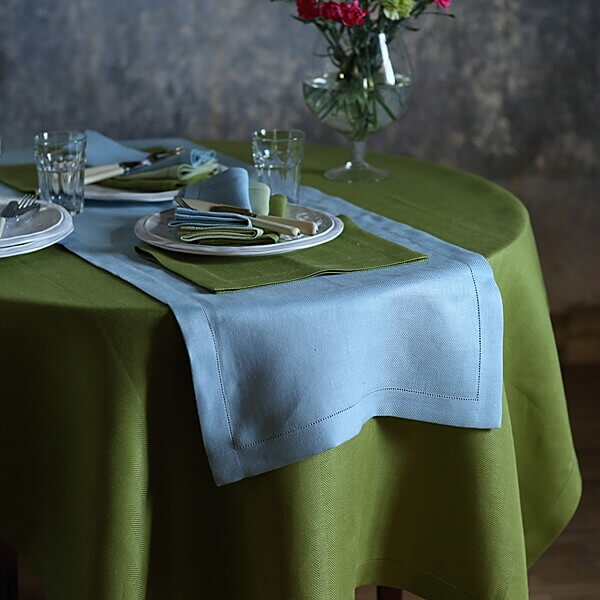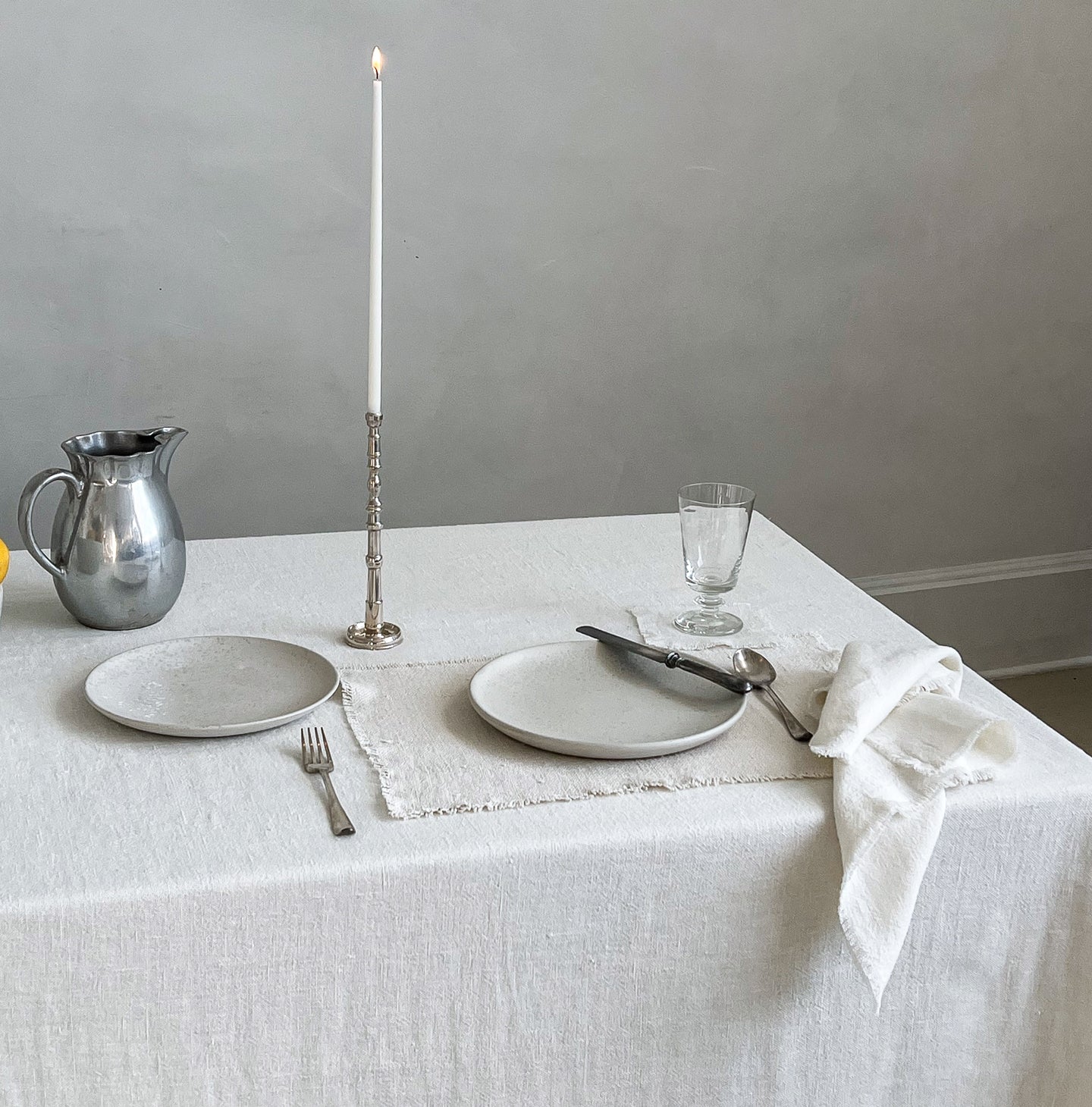Linen Material Technologies: Discovering Modern Trends and Creative Applications in Style and Fabric Market
From sustainable manufacturing approaches to sophisticated weaving innovations, the evolution of linen is improving the landscape of the fabric industry. As we dive into the worlds of innovative layout applications and the introduction of linen blends and hybrid fabrics, a brand-new phase unfolds in which linen's role in future textile technologies takes facility phase.
Lasting Practices in Bed Linen Manufacturing
Sustainable practices in bed linen production have ended up being significantly crucial in the textile market's initiatives to minimize ecological influence and promote moral sourcing techniques. Bed linen, an all-natural fiber originated from the flax plant, supplies a variety of advantages such as durability, biodegradability, and breathability. However, traditional approaches of linen production can include substantial water usage, pesticide usage, and energy-intensive procedures.
To deal with these challenges, many fabric makers are adopting lasting practices throughout the linen production process. This consists of sourcing flax from natural farms that prevent damaging chemicals and chemicals, implementing water-efficient retting strategies to remove fibers from the flax stalks, and making use of environmentally friendly dyes and finishes. Additionally, some business are purchasing renewable resource sources to power their manufacturing facilities and reducing waste with recycling and upcycling initiatives.
Technological Advancements in Linen Weaving
With the expanding focus on sustainable techniques in bed linen production, the fabric industry is currently witnessing a surge in technical innovations especially intended at transforming the art of bed linen weaving. These innovations are improving the means bed linen textiles are generated, supplying raised performance, top quality, and creativity in weaving techniques.
Among the crucial technical advancements in bed linen weaving is the combination of digital looms. These advanced looms are geared up with software application that enables complex and intricate styles to be woven with precision. By digitizing the weaving process, producers can achieve greater consistency and precision in their bed linen materials.
Moreover, improvements in thread spinning innovation have enabled the manufacturing of finer and even more long lasting bed linen yarns - table cloths. This results in softer and smoother linen textiles that preserve their top quality even after multiple usages and cleans
Furthermore, the advancement of eco-friendly dyeing processes and finishes for bed linen textiles is getting traction. These lasting practices not only reduce the environmental impact but likewise satisfy the enhancing consumer need for ethically generated fabrics.
Creative Design Applications for Bed Linen
Innovative imaginative methods are significantly shaping the innovative design applications for linen in the textile market. Bed linen's natural aesthetic charm and capacity to mix with other materials make it a favored choice for developing distinct garments and devices that provide to the environmentally conscious customer.
Moreover, designers are trying out bed linen in home design, using its breathable and sturdy nature to craft fashionable furnishings such as curtains, bed linens, and furniture. The texture and drape of linen bring a sense of elegance and convenience to indoor rooms, including a touch of style to modern homes.

Bed Linen Blends and Crossbreed Fabrics

Crossbreed fabrics, on the other hand, take the principle of blending an action additionally by integrating additional components such as metallic threads, recycled products, or conductive fibers. These ingenious textiles not just broaden the design opportunities however also present practical facets like conductivity, antimicrobial residential properties, or improved resilience. Crossbreed materials are significantly being used in various markets, including style, interior decoration, and technical fabrics, where the demand for multifunctional products gets on the increase.
Linen's Function in Future Textile Innovations

In the world of future textile technologies, linen is anticipated to be a principal in the advancement of innovative functional materials. Designers and researchers are checking out methods to boost bed linen's inherent qualities with technical improvements, such as including clever fabrics, nanotechnology, and efficiency surfaces. These innovations aim to raise linen's efficiency features, making it suitable for a broader range of applications, from activewear to protective clothes.
Additionally, the mix of bed linen with other natural or synthetic fibers opens up unlimited possibilities for creating novel textiles with unique residential or commercial properties link and performances. By leveraging linen's characteristics and exploring innovative blends, the fabric sector is positioned to present interesting developments that deal with evolving customer demands and sustainability demands.
Final Thought
Finally, the exploration of lasting methods, technological developments, creative layout applications, bed linen blends, and its role in future textile technologies highlight the constant development of linen textile in the contemporary design and fabric market. With a concentrate on innovation and creative thinking, the adaptability and environmentally friendly nature of linen make it a beneficial material for makers and designers alike, leading the way for more advancements and developments in the area of textiles.
As we dive into the worlds of innovative layout applications and the introduction of linen blends and crossbreed materials, a brand-new chapter unravels in which linen's duty in future textile innovations takes facility phase.
Checking out the fusion of bed linen with various other materials has actually led to the development of innovative blends and hybrid fabrics in the contemporary fabric industry. Bed linen blends offer an one-of-a-kind combination of the attributes of bed linen with those of other fibers, resulting in textiles that possess boosted buildings such as enhanced durability, enhanced draping, and reduced wrinkling.The development of bed linen blends and crossbreed materials has actually set the stage for Bed linen to play a pivotal function in driving future fabric innovations.In the realm of future fabric innovations, linen is anticipated to be a vital player in the advancement of innovative practical textiles.